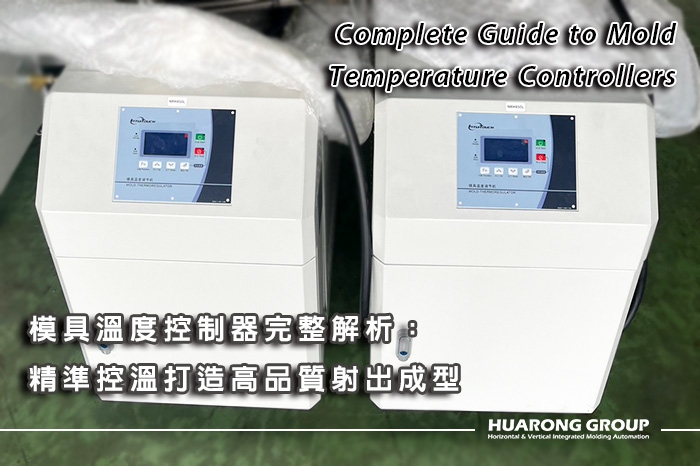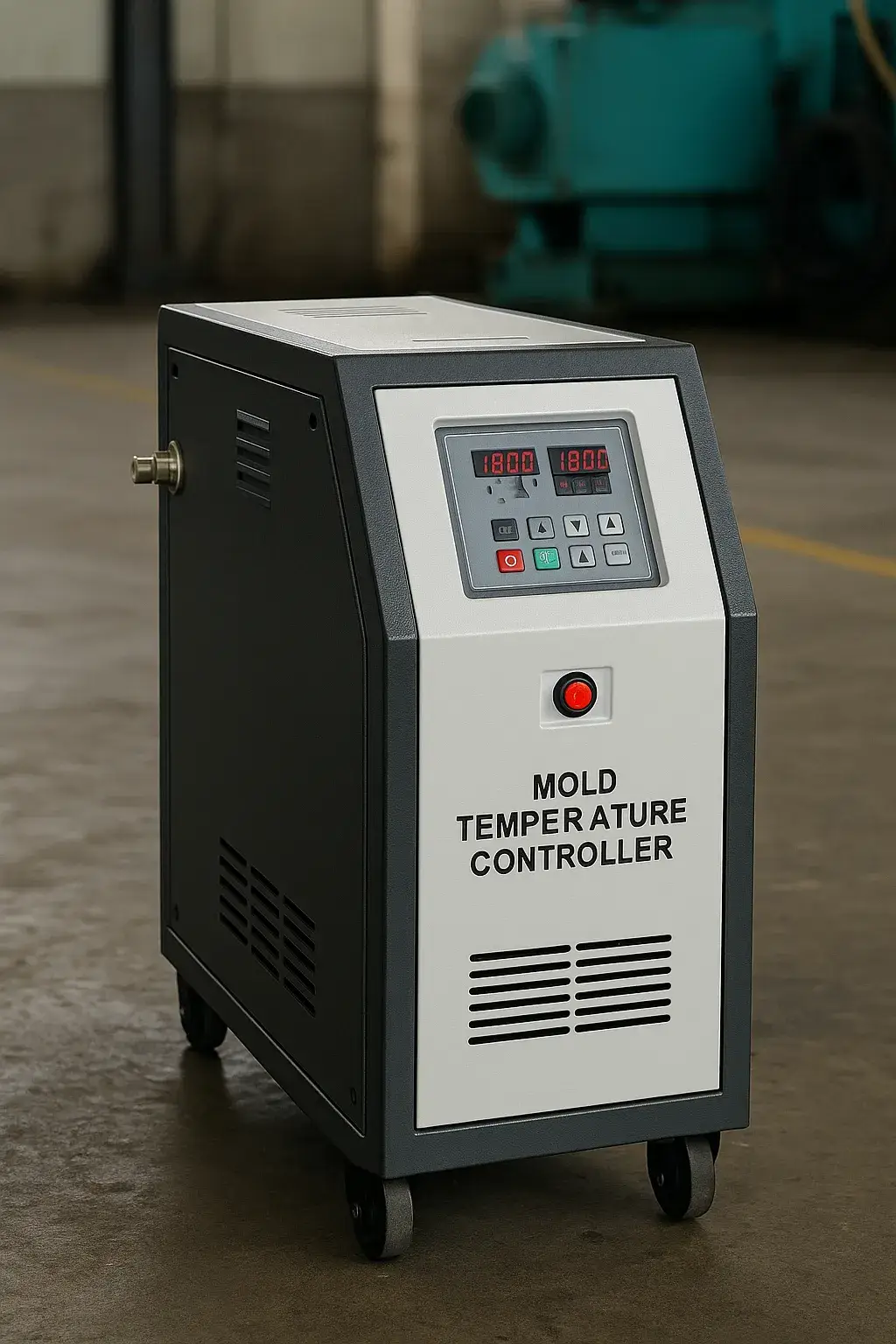Complete Guide to Mold Temperature Controllers:Precision Control for High-Quality Injection Molding
2025-10-02 13:30:46

Stable mold temperature control is the cornerstone of ensuring product quality and process efficiency. Any fluctuation in mold temperature may cause dimensional deviations, surface defects, or even structural failures, resulting in unnecessary scrap and production losses. Therefore, the Mold Temperature Controller (MTC) has become a core piece of equipment for modern factories to achieve high-quality manufacturing.
A mold temperature controller is a device that regulates mold temperature precisely by heating or cooling a heat transfer medium (such as water or thermal oil). It ensures temperature stability during the molding process and keeps the mold within the optimal operating range.
- Control System:Typically employs advanced PID (Proportional–Integral–Derivative) algorithms to continuously correct deviations between the actual temperature and the set point.
- Heating Unit:Uses electric heaters to rapidly raise the temperature of the medium to the target level.
- Cooling Unit:Employs cooling water or thermal oil circulation to lower the mold temperature quickly.
- Circulation Pump:Delivers the heated or cooled medium uniformly to the mold, preventing uneven temperature distribution.
- Sensors:Monitor temperature, pressure, and liquid level, providing real-time feedback to the control system.
- Safety Protection Devices:Prevent risks such as overheating, low water level, or power failures.。
Further Reading: Injection Molding Auxiliary Equipment: A Beginner's Guide
* This image is an AI-generated product image. If you're looking for similar products, we recommend searching directly for "Mold Temperature Controller" to find more relevant results. *
The operating process of an MTC can be simplified into four stages:Detection → Heating/Cooling → Circulation → Feedback.
1. Detection:Sensors check whether the liquid level and temperature of the medium meet operational requirements.
2. Heating or Cooling:Depending on the set temperature, the heater or cooling unit is activated to bring the medium to the target value.
3. Circulation Control:The circulation pump continuously delivers the medium to the mold, ensuring uniform cavity temperature and stable heat exchange.
4. Feedback Correction:Sensors provide constant data feedback, while the PID controller instantly calculates and adjusts heating/cooling output to avoid excessive deviations.
This closed-loop mechanism ensures precise and stable mold temperature control throughout production, minimizing defects caused by temperature fluctuations.
Temperature control has a profound impact on injection molding, influencing both process efficiency and final product quality.
| Benefit Aspect | Impact & Explanation |
| Product Quality | Prevents defects such as sink marks, warpage, short shots, and burn marks; ensures consistency in appearance and dimensions. |
| Cycle Efficiency | Accurate temperature control shortens cooling time and demolding time, boosting production speed. |
| Yield Improvement | Reduces scrap, minimizing raw material and labor waste. |
| Energy Management | PID control and heat recovery technology lower energy consumption and production costs. |
| Equipment Safety | Automatic protection mechanisms prevent overheating or cooling failures, safeguarding machines and operators. |
In real-world production, mold temperature is not static. Especially during product changes or cycle transitions, rapid heating or cooling is often required. This is where the control performance of MTCs becomes crucial.
- Heating elements provide high power output, enabling rapid temperature rise within seconds.
- High-performance cooling circuits and water/oil exchangers quickly absorb excess heat.
- Thermocouples and RTDs (Resistance Temperature Detectors) provide real-time monitoring.
- They detect even minor fluctuations, allowing the controller to make timely adjustments.
- Prevents overshooting or undershooting during rapid temperature changes.
- Compared with traditional control, PID improves efficiency by around 10%, maintaining better stability.
- When the temperature exceeds set limits, the system immediately triggers visual or audio alerts.
- Advanced controllers can even connect to central control systems for remote monitoring and predictive warnings.
- Some high-end controllers feature heat recovery, reusing dissipated heat.
- This reduces power consumption and supports sustainability goals.
Due to their critical role in precision and stability, MTCs are widely used across multiple industries:
- Plastics Industry:Injection molding, extrusion, and blow molding processes, ensuring mold temperature control and material flow stability.
- Automotive Manufacturing:Applied in parts such as bumpers, headlights, and interior components to ensure dimensional accuracy and surface quality.
- Electronics Industry:Used in circuit boards, connectors, and consumer electronics housings.
- Medical Devices:Meets high standards of consistency and defect-free requirements for medical-grade plastic components.
The mold temperature controller is no longer just an auxiliary device for maintaining temperature; it has evolved into an intelligent core throughout the injection molding process. It enables manufacturers to improve product quality, reduce defect rates, shorten cycle times, and lower energy costs simultaneously.
With continuous technological advancement, the future of MTCs lies in greater intelligence, potentially incorporating AI algorithms for self-learning and predictive maintenance. This will elevate mold temperature control from “passive adjustment” to “proactive optimization.”
- Group Name: Huarong Group
- Brand: Huarong, Yuhdak, Nanrong
- Service Offerings: Injection Molding Machine, Vertical Injection Molding Machine, Injection Molding Automation
- Tel: +886-6-7956777
- Address: No.21-6, Zhongzhou, Chin An Vil., Xigang Dist., Tainan City 72351, Taiwan
- Official Website: https://www.huarong.com.tw/


